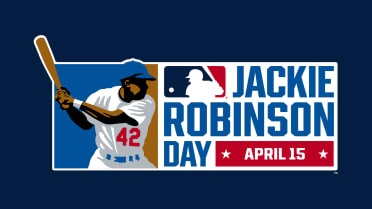The Amaurys Nina Baseball Academy in the Dominican Republic has kids as young as 12 years old training and preparing for their professional careers. Even at that early age, they are almost totally immersed in the sport, because that’s when the trainers who facilitate deals between young ballplayers and Major League clubs are watching them closely.
“I have [kids training at that young age] not because I want to have it, but because the system made me have it,” Nina said. “You see kids [informally agreeing to contracts] at 13 years old, when they should be in school.”
Baseball’s international market -- the means by which players outside the United States, Canada and Puerto Rico are acquired by Major League Baseball’s 30 clubs -- has not received a great deal of attention from fans and the media during the ongoing Collective Bargaining Agreement negotiations. But look around, at young stars like Vladimir Guerrero Jr., Fernando Tatis Jr., Ronald Acuña Jr and Juan Soto (all of whom signed as amateurs when they were teenagers) and the overall impact that international talent has on the modern game.
Increasingly, MLB is an international sport, and so the subject of international acquisitions is a very important one in these labor talks.
MLB has used these talks to propose an International Draft to replace the current system, which is rife with issues. Latin American players as young as 12-14 years old have been known to make verbal commitments to clubs, even though they are not eligible to sign until they are 16. The pressure to impress at a young age has led to increased use of performance-enhancing drugs. And with no leverage to walk away from an offer and attend college, players often sell themselves short in order to lock in a commitment.
“The International Draft would have more fairly allocated talent among the clubs,” Commissioner Rob Manfred told reporters, “and reduced abuses in some international markets.”
Since 2012, there have been limits on how much teams can spend on international talent in a given year. Initially, a soft cap was put in place, with a tax on any overages. When some teams tried to game that system by blowing past the limits with little regard for the tax, a hard cap was put in place for the 2017-21 CBA. But the cap did not prevent the environment, so-called “handshake deals” that prevent young players from exploring other opportunities or improving their stock in the market.
MLB believes an International Draft is the best mechanism for addressing that issue, because early deals are virtually impossible in a system in which neither player nor club knows when any particular player may be selected, or by whom. During the CBA talks, the league has proposed the following International Draft system to the MLB Players’ Association:
• A 20-round Draft with more than 600 selections (regular picks, plus competitive balance selections), which are guaranteed because clubs cannot pass on its selections.
• Each slot in the Draft would also carry a guaranteed signing bonus amount (the first pick would be worth $5.25 million). This would ensure more money, in aggregate, to the 600 draft picks than was spent on more than 1,000 international players in the last full signing period prior to the COVID-19 pandemic.
• Additionally, there would be no limit on the number of players who could sign, if they were not selected in the Draft. Thus, the Draft should not affect the total number of players signed -- and players who were not selected in the Draft could sign for more money than they are receiving in the current system.
• All told, between players who are selected and those who sign after they are not selected, between $21 million and $23 million of additional spending on international players is expected in this new system.
• The signing age -- and the countries from which international players could sign -- would remain the same.
• All players would be subject to mandatory drug testing.
• Each club would be randomly assigned to a group of six clubs, and each group would then rotate through Draft order over a five-year period. So the Draft order would not be tied to team record. Rather, clubs would have equal access to international talent over the life of the CBA.
• Draft picks could be traded between clubs.
• A signing deadline three weeks after the Draft.
• In an effort to grow the game, clubs would receive supplemental selections for drafting and signing players from non-traditional international baseball countries.
MLB proposed this system after extensive discussions with clubs, trainers, former players and government officials.
“Before, I did not want the Draft, to be honest with you,” said Nina, a former Minor League outfielder who now runs his own academy and is one of hundreds of trainers in MLB’s Trainer Partnership Program. “But now, with the way the system is, the only goal is to have the Draft.”
Nina said the acceleration of early deals and PED use compelled him to become an advocate for the Draft.
According to the data compiled by MLB, the top 600 bonuses allocated to international players during the 2019-20 signing period totaled $163.9 million.
Under the Draft proposal, the top 600 players would receive a total of $180.5 million -- a gain of $16.6 million, which is a little more than 10 percent. Compared to the 2018-20 signing periods, the top five players signed under the proposed Draft slotting system would have received an average of $596,000 more than in the current model. Virtually every player would sign for more money in the Draft than under the current conditions, with no concern about kickbacks or other promises to the trainers who recommend them to clubs in the current environment.
MLB envisions an International Draft event, possibly held in the Dominican Republic or Miami, as well as a series of leagues and scouting showcases in the D.R., Venezuela and other countries. MLB would commit to hiring additional staff to support player identification and development.
An International Draft has been a topic of interest in baseball for many years. It has come to a head in these CBA talks because of the growing concerns with handshake deals and the growing influence of international talent.
“We need to fix the system,” Nina said, “because the system is not working.”
Anthony Castrovince has been a reporter for MLB.com since 2004.




